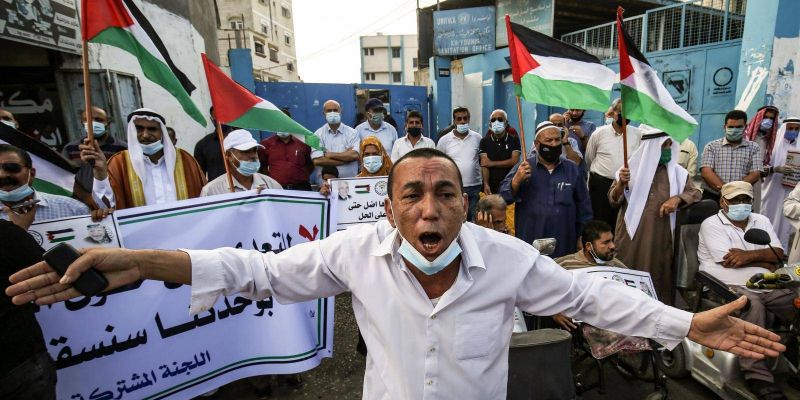
An all-time peak in people needing humanitarian assistance was reached in 2020 – 243.8 million spread across 75 countries – and yet at the same time global humanitarian funding decreased to an unparalleled 52 per cent gap. COVID-19 has exacerbated pre-existing crisis situations, and advanced economies are not meeting their targets, in part due to the demands of the pandemic.
So while the needs are greater than ever before, so is the lack of funding. The UK recently cut aid spending temporarily from 0.7 to 0.5 per cent and other G20 countries such as Australia and Italy have also failed to meet their aid targets – in fact Australia has been pursuing a policy of decreasing aid spending. As one of the few exceptions, in 2021 the European Commission increased its humanitarian budget from €900 million in 2020 to €1.4 billion, but overall the trend of Official Development Assistance has been downward.
Right now, despite allegations of human rights abuses and mass killings, the conflict in Tigray, Ethiopia, has a humanitarian aid funding gap of $364 million. In Yemen and the Democratic Republic of Congo (DRC), populations are facing famine and a hunger crisis and nowhere near enough humanitarian aid is reaching affected populations.
A diverse set of donors
In light of such realities there is now an increased call from aid institutions for emerging economies – referred to as ‘new donors’ – to do more to help fill the humanitarian funding gap.
Following the Grand Bargain Annual Meeting in June, the annual gathering to assess an agenda of aid reform launched at the World Humanitarian Summit in 2016, its new leader Jan Egeland said he wanted to explore whether emerging economies could increase aid spending, and one German minister cited emerging economies’ ‘economic capacity’ as a reason to increase their aid contributions through the United Nations (UN).
However, it is unlikely that emerging economies will be the immediate solution to the international humanitarian financing problem. As a diverse set of countries, these donors are often not part of international governance mechanisms for humanitarian decision-making such as the OECD’s Development Assistance Committee (DAC). They tend to consider the international multilateral aid system to be Western-dominated and have shown a reluctance to join the structures.
Even the term ‘new donors’ is problematic as many have been providing humanitarian assistance for decades, and do not see themselves as donors but as partners of affected states. Aid dynamics are perceived by many emerging economies as hierarchical and even exploitative, leading to a preference to channel cooperation directly through the affected government.
For large emerging economies, the basis for providing humanitarian assistance is to foster partnerships on an equitable basis and pursue foreign policy objectives, particularly in their geographical region. India, for example, is often referred to as the ‘neighbourhood’s first responder’ as it largely carries out humanitarian assistance generously on a bilateral basis in the region and makes only limited contributions to multilateral institutions through UN-led appeals.
Similarly, China, in a class of its own in terms of economic capability, tends to provide humanitarian assistance through government-to-government arrangements rather than through international donors, and its financial contributions to the multilateral aid system are small compared to its bilateral loans. However, in its new White Paper on international development cooperation China stated its intention to increase financial contributions to international organizations but it remains to be seen whether this is through the UN aid system.
Such a dichotomy between insufficient humanitarian funding from advanced economies and emerging economies operating outside of the multilateral humanitarian financing system raises important questions about the future financing and operating of humanitarian assistance.
Emerging economies deploy assistance as part of a different toolbox which largely bypasses the international humanitarian structures altogether. This toolbox is more diversified and ad hoc than the UN’s multilateral aid system, but ultimately is often seen as serving the national interest better. But with many, not just one, international humanitarian financing systems, co-opting emerging economies into the multilateral system governed by DAC and other institutions is difficult.
Towards a more comprehensive funding approach
Widening the humanitarian resource base through engagement with new donors was identified as a key pillar for closing the financing gap by the UN Secretary-General’s High-Level Panel on Financing in 2016. Five years later, little progress has been made.
The current challenges highlight the limitations of assessing funding only through UN appeals, and a more comprehensive understanding of funding provided by governments to crisis situations is needed. Ensuring coherence and avoiding further fragmentation of financing requires increased understanding of the different ways in which emerging economies already channel humanitarian support and assistance.
Perhaps the system could be more effective if the focus were to shift to recognizing and legitimizing the prevailing multiple existing systems. This would involve accepting the multitude of humanitarian and development actors and creating enabling environments in which different types of humanitarian donors and mechanisms are equally valued and used.
However it is to be measured, the current funding gap leaves affected populations lacking support. Their needs require sustained engagement and funding from humanitarian donor countries across the board – including Australia and the UK, but also China and India. The opportunity cost of not doing so is simply too great.
Armida van Rij, Research Fellow, International Security Programme.
